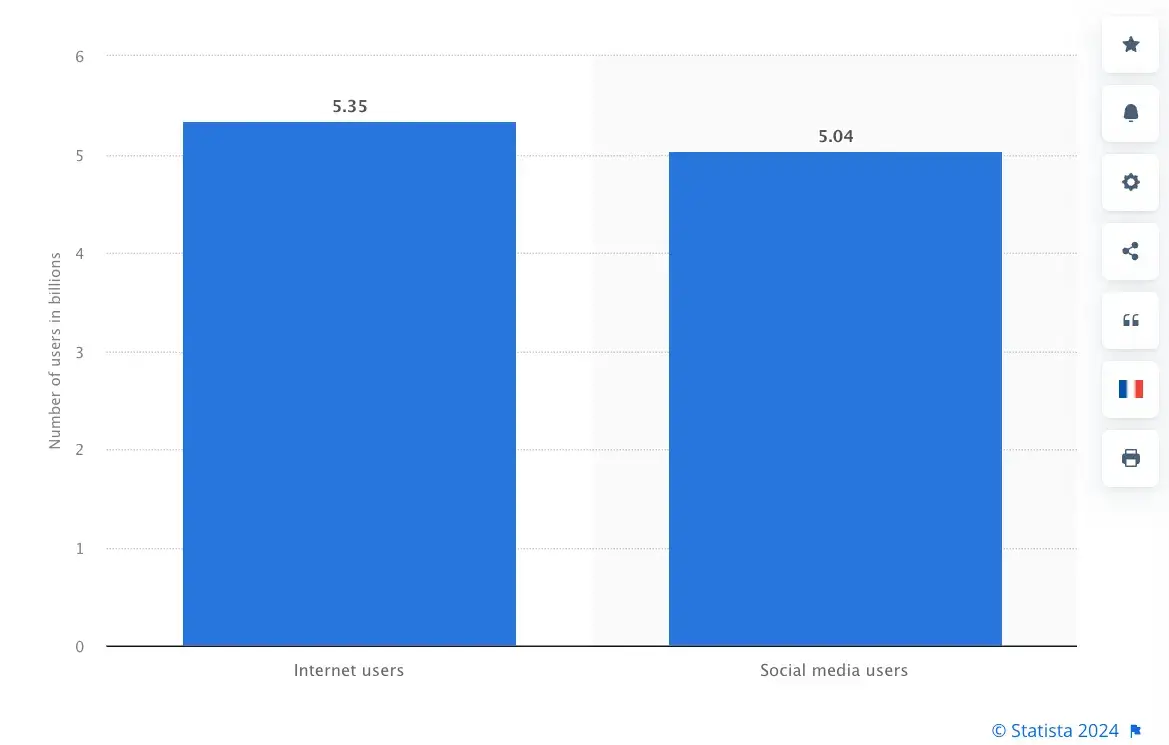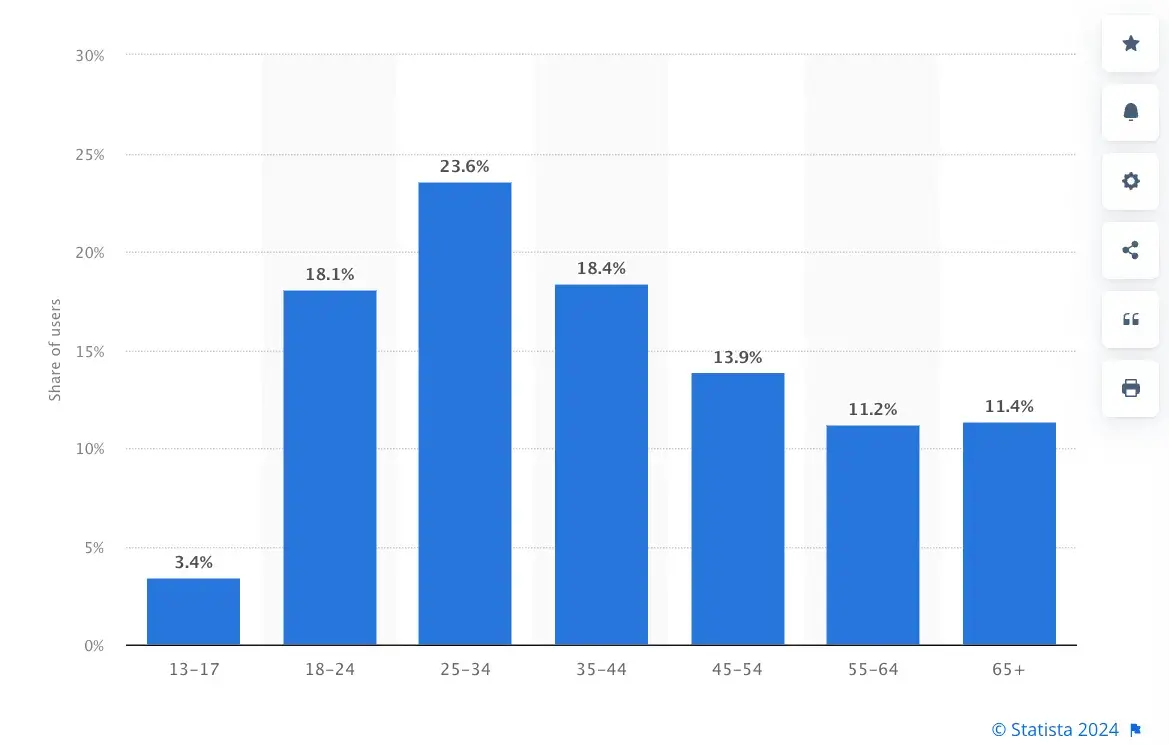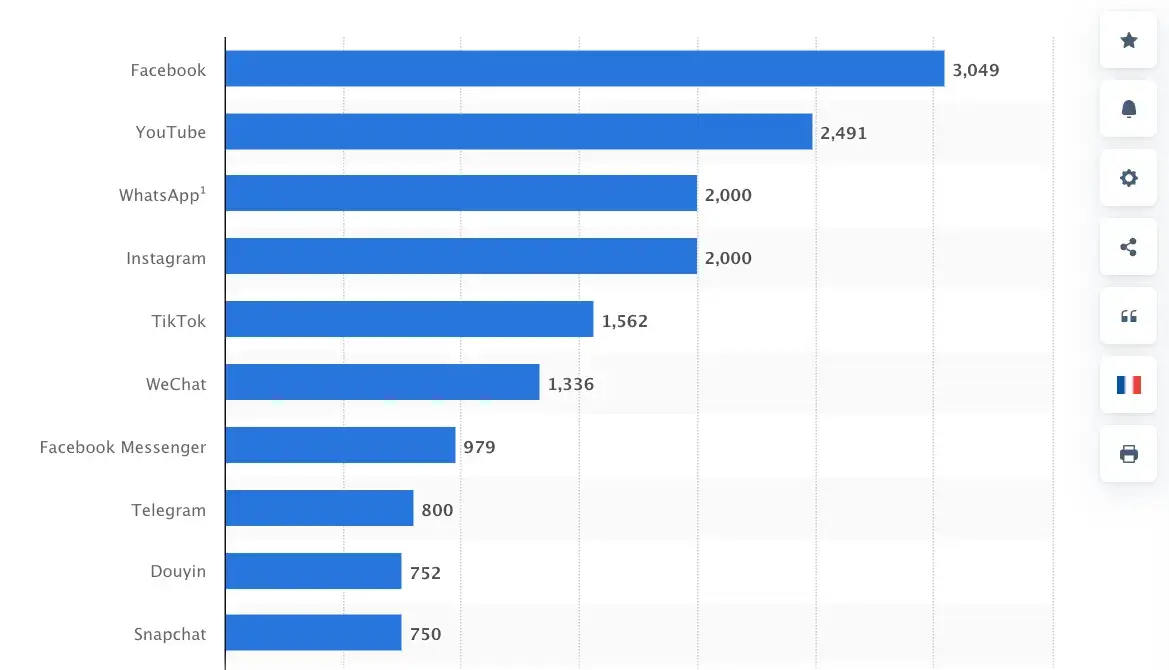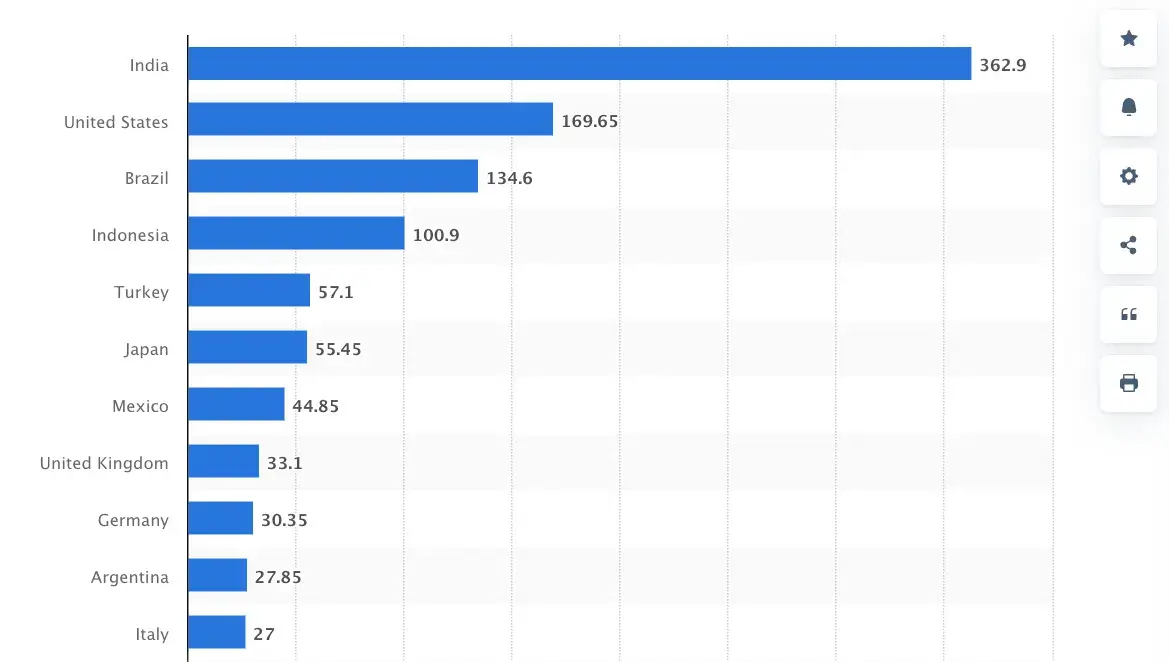Social media has become an integral tool for individuals and businesses. It serves as a platform for communication, networking, and brand promotion.
However, simply having a presence on social media is not enough. Engagement with the audience is crucial for success.
Social media engagement refers to the interactions, reactions, and conversations between users and content on various social media platforms.
It includes likes, comments, shares, mentions, and other forms of interaction that indicate active participation and interest in the content.
Social media engagement tactics are strategies and techniques used to boost interaction and connection with the audience and is crucial for a solid social media presence.
These tactics aim to increase visibility, build connections, and drive expected actions like brand loyalty, website traffic, or sales conversions.
Examples of social media engagement tactics include:
- Posting engaging content.
- Responding to comments and messages promptly.
- Running contests or giveaways.
- Collaborating with influencers.
- Utilizing user-generated content.
Furthermore, the integration of AI technologies in social media management has revolutionized engagement strategies.
AI algorithms analyze user behavior, preferences, and trends to optimize content creation and delivery, maximizing audience engagement.
With an innovative tool like an AI image extender, businesses can enhance visual content effortlessly, captivating audiences and building deeper connections.
Understanding Social Media Engagement
According to the latest data, there are almost 5.35 billion internet users and 5.04 billion social media users, which leads us to conclude that being out of social media means losing on a huge opportunity.
Number of internet and social media users worldwide as of January 2024 (in billions)

Source: Statista
However, taking into account the vast number of users, nowadays, more than the presence on social media is needed.
Being active and engaged with your audience plays a significant role in developing your brand voice and overall picture.
Engagement metrics on social media platforms refer to the quantifiable actions users take in response to the content shared by individuals, brands, or businesses.
These metrics typically include likes, comments, shares, and sometimes other forms of interaction such as reactions, mentions, and saves.
These engagement metrics are crucial indicators of the effectiveness and resonance of content with the audience.
They provide valuable insights into audience preferences, interests, and behaviors, enabling individuals and businesses to improve their social media strategies and optimize content.
-
Benefits of high engagement levels
High levels of engagement on social media offer numerous benefits for brands and businesses.
Firstly, it enhances visibility and reach, as highly engaged content is more likely to be prioritized by algorithms and shown to a broader audience.
Increased engagement promotes brand awareness and recognition as users interact with the content, boosting its reach and exposure.
Secondly, high engagement levels indicate an active and involved community, which can lead to stronger brand loyalty, advocacy, and word-of-mouth marketing.
Additionally, engagement metrics serve as key performance indicators (KPIs) for evaluating the success of social media campaigns and initiatives, providing actionable insights for future strategies and content development.
-
Different types of engagement (Reactive vs. Proactive)
You can categorize engagement on social media into two main types: reactive and proactive engagement.
Reactive engagement refers to responses and interactions initiated by users in response to the content shared by others.
It includes actions such as liking, commenting, sharing, or responding to posts, messages, or mentions from other users or brands.
Proactive engagement, on the other hand, involves actions taken by individuals or businesses to initiate interaction with their audience.
This may include posting engaging content, asking questions, running polls or contests, responding to comments and messages promptly, and actively participating in conversations within the community.
Both reactive and proactive engagement are essential components of a well-structured social media strategy, contributing to building relationships and community and driving desired outcomes for individuals and businesses.

Source: Freepik
-
Defining your target audience and understanding their needs
Before creating a social media engagement strategy, you must define your target audience and understand their needs, preferences, and behaviors.
It involves conducting thorough market research to identify demographic characteristics, such as age, gender, location, and income level, as well as psychographic factors, such as interests, values, and lifestyle choices.
By segmenting your audience and creating detailed buyer personas, you can personalize your content and messaging to resonate with specific audience segments, addressing their pain points and motivations.
After defining your target audience, decide which platform works best. The characteristics can play a vital role in choosing the platform, as its usage fluctuates with each.
For example, when selecting the U.S. demographic, you can look for viable statistics of every age group for each platform.
Reviewing this information will improve your understanding of which direction is the right one for your digital presence.
Share of Facebook users in the United States as of August 2023, by age group

Source: Statista
Understanding your audience's needs enables you to provide valuable and relevant content that captures their attention and encourages meaningful engagement.
Establishing Brand Voice and Personality
Establishing a distinguishing brand voice and personality is essential for building a strong and recognizable presence on social media.
Your brand voice reflects the tone, style, and language used in your communications, while your brand personality defines the characteristics that represent your brand's identity.
Despite your brand voice, consistency is vital to maintaining authenticity and building trust with your audience.
Creating a brand story that resonates with your audience and encourages engagement involves aligning your brand voice and personality with your target audience's preferences and expectations.
To achieve this, there are many techniques, some of which are adding unique elements to your designs, filming videos, and creating video intro templates that will differentiate you from competitors.
-
Choosing the right social media platforms for your audience
As of January 2024, the biggest social media platform is Facebook, with 3,049 million users, and Pinterest at the bottom of the list, with 482 million users.
However, this does not mean that when joining social media, you must choose the biggest platform and disregard the ones at the bottom since it may not be the right platform for your brand.
Most popular social networks worldwide as of January 2024, ranked by number of monthly active users (in millions)

Source: Statista
Not all social media platforms are created equal, and different platforms attract different audiences with distinct preferences and behaviors.
To maximize engagement and reach your target audience effectively, it's essential to choose the right social media platforms for your brand.
For example, if your target audience consists primarily of young adults and millennials, platforms like Instagram and TikTok may be more suitable for reaching them, whereas if your audience is professionals and business executives, platforms like LinkedIn may be more appropriate.
Additionally, even though some platforms are widely known and used, these might not work as well as other platforms in some countries.
Considering this fact, Instagram is actively used on numerous platforms but isn’t available in China, Vietnam, Egypt, etc.
Therefore, there are many factors to consider before choosing the platform for your brand presence.
Some countries can have the Instagram platform for only Generation Z, but for other more developed countries, this platform can be used to reach older generations.
Leading countries based on Instagram audience size as of January 2023 (in millions)

Source: Statista
Social Media Engagement Tactics
-
Creating compelling content
Visual Content Strategies (Images, Videos, Infographics) - Visual content is highly engaging and can capture users' attention more effectively than text alone.
Create visually appealing images and videos for social media and incorporate them to create ads for gaining and retaining possible customers.
To catch your target audience’s eye, it is essential to have high-quality and attractive content.
Therefore, it is crucial to use a highly functional and flexible photo editing tool to ensure the best quality visuals that align with your brand identity and resonate with your target audience.
Experiment with different formats, such as behind-the-scenes footage, product demonstrations, or user-generated content, to keep your content fresh and exciting.
It would be best to create different content for different platforms based on their focus. Take Acon24 as an example.
While this trampoline brand frequently posts images and videos on its Instagram, it mostly posts marketing campaigns or promotions on its Facebook.
Interactive Content Formats (Polls, Quizzes, Contests)
Interactive content encourages your audience's active participation, driving higher engagement levels.
Include interactive elements like polls, quizzes, and contests into your social media strategy to start conversations and encourage feedback.

Source: Freepik
Polls allow you to gather insights, preferences, and opinions from your audience, while quizzes can be entertaining and informative.
Contests and giveaways encourage users to share your content with their networks, expanding your reach and visibility.
Responding Promptly to Comments and Messages
Engagement is a two-way journey, and responding promptly to comments and messages demonstrates that you value and appreciate your audience's input.
Observe your social media channels regularly and promptly engage with comments, questions, and messages.
Personalize your responses using modern technology, such as an AI writer, and address users by name whenever possible to create a sense of connection.
Acknowledge positive feedback, address concerns or complaints, and thank users for their engagement to develop a positive and supportive community.
When users receive recognition for their contributions, whether it's through likes, comments, or shares, they feel valued and are more likely to continue engaging with the content and the community.
It creates a sense of belonging and encourages users to participate more actively.
Furthermore, promptly addressing concerns or complaints demonstrates transparency and responsiveness, which builds trust with the audience.
It shows that the community and its members' experiences are taken seriously, leading to increased satisfaction and loyalty.
Expressing gratitude towards users for their engagement strengthens relationships and encourages further interaction.
Analyze and Then Act
When new popular platforms arise, consider first of all analyzing them to understand the demographic they target and ask yourself if it will bring value to your digital presence or burden you with another platform.
For instance, Meta's latest product, Threads, which is similar to X (formerly Twitter), made some noise when it first came out, but comparably, it is used less often.
Hence, you need to consider factors such as these, and after analyzing the platform, make a strategic decision on how to utilize the social media platform and take advantage of its full potential.
Number of users engaging daily with Twitter and Threads mobile apps worldwide in July 2023

Source: Statista
Asking Questions and Encouraging Feedback
Encourage interaction with your audience by asking questions and requesting feedback on your social media posts.
Pose open-ended questions that invite users to share their thoughts, experiences, and opinions on relevant topics or current events.
Actively listen to and acknowledge user feedback, incorporating it into your content and strategy where appropriate.
Engage your audience by making them feel heard and valued to strengthen relationships over time.
-
Building Relationships and Community
Hosting Live Events or Q&A Sessions
Live events and Q&A sessions provide opportunities for real-time engagement and interaction with your audience.
Host live streams or virtual events on platforms like Facebook or Instagram to share valuable insights, provide updates, or answer questions from your audience.
Encourage participation by promoting the event in advance, inviting audience members to submit questions or topics for discussion, and actively engaging with attendees during the event.
Live events humanize your brand and create a sense of community, allowing you to connect with your audience more personally.
Collaborating with Influencers or Partner Brands
Collaborating can help you reach new audiences and strengthen your social media engagement efforts.
Identify influencers or brands that share your values, target audience, or niche market and explore opportunities for collaboration, such as sponsored content, co-branded campaigns, or joint events.
Partnering can lend credibility and authenticity to your brand while expanding your reach and exposure.

Source: Freepik
It is vital to highlight key aspects that build a thriving community and foster meaningful connections on social media, which require a strategic approach and consistent effort.
As previously mentioned, critical strategies for achieving this include creating compelling content that resonates with your audience, enabling two-way conversations by responding promptly to comments and messages, and actively engaging with your audience through interactive content formats like animation videos and live events.
Additionally, collaborating can help expand your reach and strengthen your engagement efforts, while choosing the right social media platforms for your audience ensures that your efforts are targeted and effective.
Authenticity builds trust and credibility with your audience, while consistency ensures that your brand voice and messaging remain cohesive and recognizable across all platforms.
By staying true to your brand identity and values and consistently delivering valuable and relevant content to your audience, you can cultivate a loyal and engaged community supporting and advocating for your brand.
As social media continues to develop and play an increasingly central role, brands must prioritize engagement as a core component of their social media strategy.
Engagement is not just about metrics and numbers. It's about building meaningful relationships with your audience and creating value for them.
Brands that invest in building community and connections on social media will benefit from the rewards of increased brand loyalty, advocacy, and long-term success.
Considering these factors, we urge brands to commit to prioritizing engagement and allocating resources to support their efforts.
Take advantage of the full potential of social media to build relationships, drive business growth, and positively impact your audience.

